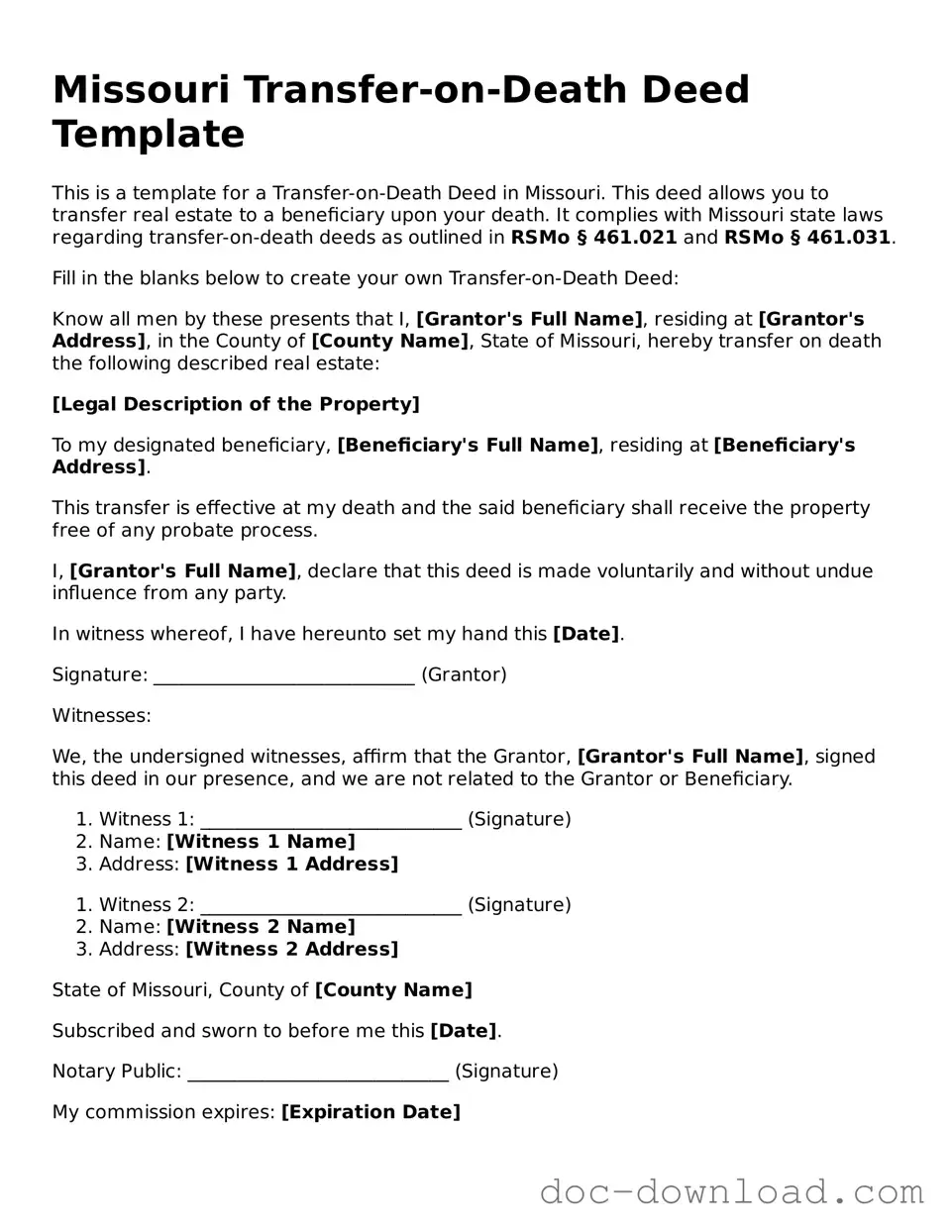Missouri Transfer-on-Death Deed Template
This is a template for a Transfer-on-Death Deed in Missouri. This deed allows you to transfer real estate to a beneficiary upon your death. It complies with Missouri state laws regarding transfer-on-death deeds as outlined in RSMo § 461.021 and RSMo § 461.031.
Fill in the blanks below to create your own Transfer-on-Death Deed:
Know all men by these presents that I, [Grantor's Full Name], residing at [Grantor's Address], in the County of [County Name], State of Missouri, hereby transfer on death the following described real estate:
[Legal Description of the Property]
To my designated beneficiary, [Beneficiary's Full Name], residing at [Beneficiary's Address].
This transfer is effective at my death and the said beneficiary shall receive the property free of any probate process.
I, [Grantor's Full Name], declare that this deed is made voluntarily and without undue influence from any party.
In witness whereof, I have hereunto set my hand this [Date].
Signature: ____________________________ (Grantor)
Witnesses:
We, the undersigned witnesses, affirm that the Grantor, [Grantor's Full Name], signed this deed in our presence, and we are not related to the Grantor or Beneficiary.
- Witness 1: ____________________________ (Signature)
- Name: [Witness 1 Name]
- Address: [Witness 1 Address]
- Witness 2: ____________________________ (Signature)
- Name: [Witness 2 Name]
- Address: [Witness 2 Address]
State of Missouri, County of [County Name]
Subscribed and sworn to before me this [Date].
Notary Public: ____________________________ (Signature)
My commission expires: [Expiration Date]
